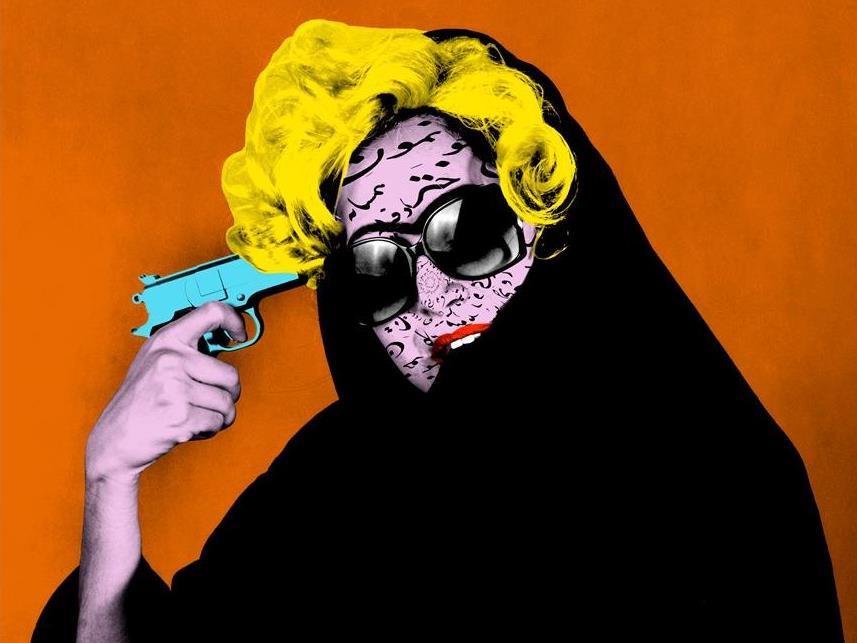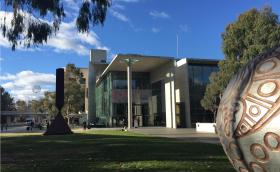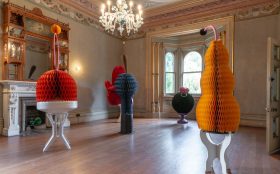Hoda Afshar’s Westoxicated #3 (detail) from the series Under Western Eyes, 2013-2014. Medium: digital photograph, 100 x 87 cm. Courtesy of the artist.
Art has a role in society to transcend politics and to explore ambiguity. It achieves this through taking a strong and often singular perspective of an event, theme or idea.
As a result, Australian contemporary art collectors often choose to buy work that references social or political issues.
The work’s oblique commentary, acts as a subtle underpinning. It becomes a time capsule of an artist’s thoughts, their personal journey, biography and response to the world in which they live.
Routinely this means collectors choose work that runs counter to the political policies of the day. This reflects the artist’s mind more than their own perhaps. This occurs because artists are often people who are brilliant intellectuals, rebels, poets, communists and philosophers seeking a reaction to pressing issue in their lives.

Fatima Mawas’ Fiddler on the Roof I (video still), 2014. Medium: video Duration: 4m 0s. Dancer: Alfira O Sullivan. Oud player: Mohammad Yussuf. Courtesy of the artist.
In Australia, since 9/11, issues including: racial profiling, forced migration, dislocation and the commodification of human agency have all changed our relationship to Islamic art.
Since then, and the Cronulla Riots in 2005, work made in Australia by Muslims artists has often made reference to Islamic architecture, the emotional and mental issues facing those attempting to assimilate, or the outward appearance of the female Muslim community.
Khalas at UNSW does not feel directly Australian and perhaps that’s why it is so effective. It communicates a sense of otherness that is very ugly and brutal, but sadly the experience of many Australian Muslim artists.

Abdul Abdullah’s Mutual assurances, 2017. Medium: archival print, 100 x 232 cm. Courtesy of the artist and Lisa Fehily Contemporary Art, Melbourne.
They have been raised here, partially under a climate of fear, and have had to endure a war on terror, that further alienates their faith and politicises their religion.
If Khalas feels so foreign – so far away – then maybe that’s its power. It butts up against our naïve sensations of Australian mutliculturalism and holds a lens over Western Christian Patriarchal attitudes more so than it analyses purely Muslim ideals and faith. It makes the viewer feel ugly and judgmental. As we are outside trying to grip their experience. The first half of the exhibition is sardonic and biting. Then the second half feels exotic, oriental, mystifying and ancient.
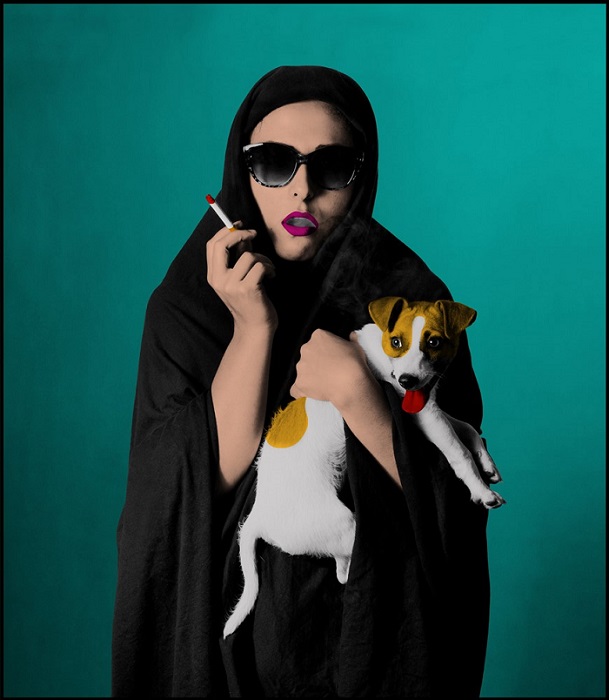
Hoda Afshar’s Westoxicated #7 from the series Under Western Eyes, 2013-2014. Medium: digital photograph, 100 x 87 cm. Courtesy of the artist.
Works to note are all, but truly arresting is Hoda Afshar. This work is powerful, direct, punchy, sexy, engaging and funny. Westoxicated #5 #7 #13 #9 explores the limited identity we ascribe to Muslim women in Australia. It’s confronting in a pop art style and it portrays Muslim women in a shocking, fashion-loving, rebellious and sexually-free way. Using pop culture to subvert stereotypes Asfhar reminds us how Muslim Aussies are constantly being called upon to react to the politicisation of their faith.
Abdul Abdullah’s photographic series Delegated Risk and Mutual Assurances cleverly uses balaclavas on the heads of photographic subjects to subvert the ritual of wedding ceremonies.
It’s the creepy red light that adds a coldness to these complex Hollywood style tableaus. You get the feeling that everything is being questioned and thrown up for discussion.
Mehwish Iqbal’s textile work When they walk, I walk, when they stop, I stop, 2017, is a sharp and biting commentary on the extreme migratory conditions and the resilience of women. It layers silk thread and patterns butter paper to echo the wear and tear on the human soul and body. Mehwish Iqbal is a truly outstanding artist whose complex and labour intensive works speak to both her heritage and the contemporary socio-politics of migration.
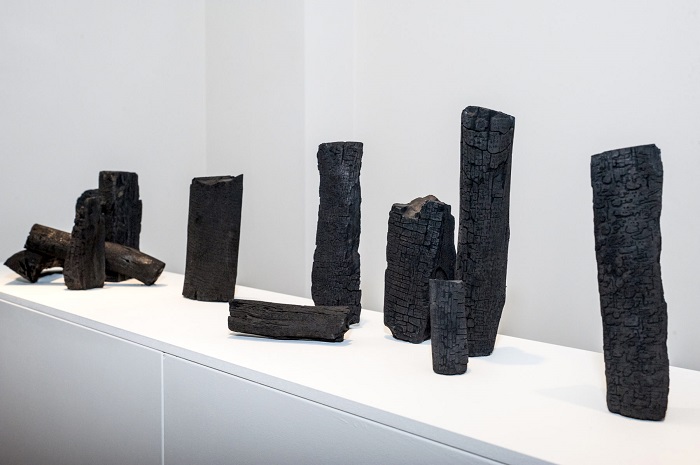
Mehwish Iqbal’s Letters to my Mother, 2017. Medium: carved charcoal, 12 parts, variable. Courtesy of the artist and .M Contemporary, Sydney.
The word khalas – the name of this exhibition has myriad definitions in Arabic including: ‘stop’, ‘finish’, ‘that’s all’, ‘it’s fine’ and ‘enough!’ And this word holds a clear message.
Within this fraught socio-political climate we call Australia – informed by the so called ‘War on Terror’, the artists here are saying that many Australian Muslims have had enough. They have also decided they are enough.
Do not miss this show in its final week.
Rating: 4 ½ stars ★★★★☆
ENOUGH خلص KHALAS
Abdul Abdullah, Abdul-Rahman Abdullah, Hoda Afshar, Safdar Ahmed, Khadim Ali, Leila El Rayes, Eugenia Flynn, Alia Gabres, Karam Hussein, Zeina Iaali, Khaled Sabsabi, Ms Saffaa, Abdullah M.I. Syed, Mehwish Iqbal, Fatma Mawas and Shireen Taweel
Curators
Associate Professor Phillip George and Nur Shkembi

